
‘A woman in a sundress takes a weed whacker to an overgrown lot; a gentle stoner meets a man with a camera in the desert as they both wait in vain for a rock concert shuttle that never comes; a voyeur lurking in a patch of shrubbery is surprised by a loquacious woman wearing a plastic Viking hat, carrying a wedge of foam-rubber cheese, and daubing an unexplained nosebleed. At first glance the films of Harry Dodge and Stanya Kahn seem like lo-fi screwball sketches, thanks to their improvisational skills, Kahn’s magnetic performances, and Dodge’s keen directorial hand. Their characters have a wistful air and a penchant for stringing anecdotal non sequiturs into unexpectedly poignant narratives. Dodge, who directs and typically shoots the films, is more than a silent partner in the pair’s enterprise. Dodge and Kahn imbue the camera’s gaze with an improbably vivid sense of personality, at once baring the formal artifice of the cinematic process and translating what might otherwise read like soliloquies by Kahn into revealing dialogues. The more one watches the pair’s pieces, the more their subversions of not just the sketch form but also filmmaking itself—and the larger conceptual reasons for these deformations—make themselves apparent.
‘Dodge and Kahn employ video as a tool to dramatize the longing that underpins interpersonal expression ( both functional and dysfunctional), the desire for contact and some sense of personal agency. What at first might seem like random decisions in the works— unorthodox choices for location, wardrobe, and editing— are carefully poised to produce scenarios that flirt with slapstick without diluting their characters’ basic humanity. This balancing act is particularly vivid in the pair’s Can’t Swallow It, Can’t Spit It Out (2006), which charts the relationship that develops between that logorrheic Valkyrie and her voyeur-cum-documentarian as the two move from confrontation to empathy during the course of an off-kilter dérive through Los Angeles. Wandering a largely depopulated city, the woman regales her newfound companion with tales that run from personal reminiscences to insane ramblings (more than a few begin “When I was in hell . . . ”), occasionally pausing in their fruitless search for “action” to lament, “You should have been there for that!” By the end, both the cameraperson and the viewer know they have. ‘ — The Whitney Museum of Art
‘The problem with most time-based work is that it takes time to watch. Years of television did not prepare me for viewing video art. But every so often, I see something that holds my attention and interest. Together, Harry Dodge and Stanya Kahn have produced a group of funny, poignant, and sometimes quite disturbing videos that continue to engage me, even after repeated viewings. They are like intimate day-in-the-life portraits of mythical fringe characters wandering through segments of a magazine-format TV show.
‘Both Dodge and Kahn have backgrounds in performance, where they honed their improvisation skills before live audiences. A similar process shapes their videos and imbues them with a charged fragility, not unlike witnessing a vulnerable stand-up comic work the room. In their scenes filled with wall-to-wall talking, it’s not always apparent how much the material has been edited and carefully reworked. But when viewed together with the videos emphasizing sound effects instead of conversation, one senses an incredible amount of time logged, both in the editing room and in their behind-the-scenes partnership, with a lot of back-and-forth, discussion, and lots of silence fueling their rich, layered narratives.’ — Michael Smith
‘The collaboration of Harry Dodge and Stanya Kahn has produced an exciting series of character-driven videos whose protagonists are, above all, under pressure: economic pressure, ecological pressure, and the pressures of class and gender (and, for that matter, genre) regimes. These pressures catalyze affective mutations and a sense of dislocation, a felling of (not so transcendental) homelessness.
‘Responding to eco-social circumstances, Dodge and Kahn work from the ethoi that the personal is political and the aesthetic is ideological. In their work, then, the aesthetic — including, crucially, the anaesthetic, and the anti-aesthetic is leveraged politically. These videos draw attention to the aesthetic itself as a fraught category, using the heightened consciousness created by the frame only to crash it, transmitting/effecting cognitive-cosmic dissonance via their signature punk-slapstick.’ — Dissociated/Dislocated
___
Stills






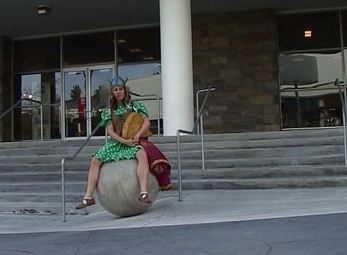





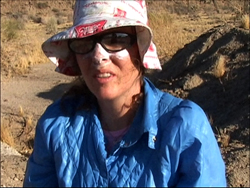

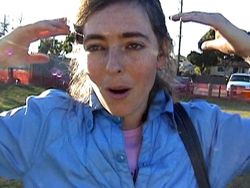


















____
Further
Harry Dodge & Stanya Kahn @ eai
Stanya Kahn Website
Stanya Kahn @ Twitter
Stanya Kahn @ Susanne Vielmetter
‘The Apocalypse Is Hilarious: Stanya Kahn’s Bleak Laughter’
‘IN THE STUDIO: STANYA KAHN’
Stanya Kahn interviewed @ PAPER
‘Stanya Kahn’s Favorite Moving Pictures Experiences of 2014’
‘Stanya Kahn’s “A Cave Walks into a Bar”’
Stanya Kahn interviewed @ Corridor8
‘Stanya Kahn Exhibition Navigates The Art Of The Joke’
Harry Dodge Website
‘Harry Dodge Meditates on Identity With ‘The Cybernetic Fold’’
‘Harry Dodge, Masked-Unmasked’
‘Harry Dodge interviewed @ The Miami Rail
from ‘High Five for Ram Dass’, by Harry Dodge
____
Extras
Stanya Kahn’s ‘It’s Cool, I’m Good’ (trailer)
The Fudgesicle (2003) By Harry Dodge
from ‘Hook or By Crook’, by Harry Dodge and Silas Howard
Harry Dodge’s The Time Eaters: Q & A
Stanya Kahn and Frances Stark in discussion
Shay Malloy ‘Toaster’, inspired by Harry Dodge and Stanya Kahn’s ‘Winner.’
______
Interview
from BOMB
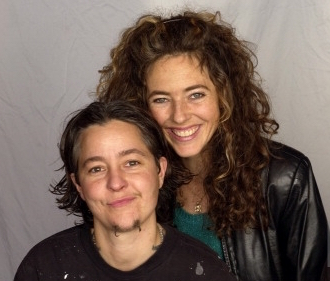
Michael Smith: I have a feeling the community you come from is very different from the art context in which I first saw your work.
Stanya Kahn: We met in 1992 in San Francisco, where there isn’t really a big, ubiquitous art machine. People created clubs in basements and there were a lot of fly-by-night spaces. It was a self-sustaining ecosystem of low-rent studio spaces and performance venues. That made it possible to have your main source of information and “training” happen in a community, as opposed to coming out of art school and tracking right into a gallery.
MS: When I arrived in New York in the mid-’70s there was an active downtown scene that operated like a vast network. There was public funding and artists opened a variety of small spaces, giving the scene the appearance of a big alternative machine, even though many spaces were lofts and storefronts where people also lived. In the ’80s, there was a shift: venues became more specialized. I floated around, gravitating to where there was support. As funding to individuals dried up, spaces supporting dance and more theatrical work were able to hold on, but raw, process-oriented performance and video suffered.
Harry Dodge: I had almost no contact with broader culture except to protest it. The performance space I ran with some others called Red Dora’s Bearded Lady Coffeehouse and Cabaret was opened just as Macy’s was trying to use ACT UP’s SILENCE = DEATH slogan as a way to sell motorcycle jackets. Our goal was to achieve a sense of artistic excellence, whatever we thought that was. It’s not that we just wanted to go out and entertain friends, even though there was a lot of that—Stanya and I share an interest in comedy, so we were drawn to each other’s work and to being in communication with an audience.
SK: I would just jump in and add—
MS: —You guys are doing very well about not jumping in on each other.
SK: I’m really trying! I would add that there was an elaborate network of communities in San Francisco who were pointedly interested in developing a language to talk about being outside systems of legitimization. Some of the people who I learned to do performance and dancing and stuff with were also anarchists. They were running basement printing presses and record labels, being hardcore frontline activists, doing civil disobedience, and all kinds of sabotage. None of those things was disconnected. So the first performances I did were with big groups of people that amounted to protest—illegal occupations of public territory. I was cultivating relationships with people who were actively interested in being in a conversation that opposed what they saw as the establishment. And at that time, in our minds, the art world was absolutely part of the establishment.
MS: It wasn’t until the early ’90s—with economic collapse and an incredible amount of AIDS-related death—that activism and identity politics entered the art world. Then the art market put language around it and figured out how to package it. You entered into the art world in the early 2000s, at a time when it was exploding. What were your expectations?
HD: What’s your understanding of how it was exploding?
MS: Just in terms of money. Was it exploding in terms of ideas? I doubt it. (laughter) I wanted to talk about your community because I know from personal experience how the reward systems are very different in distinct communities. One doesn’t normally differentiate between a performance art world and a video art world, but as long as I can remember neither video nor performance artists made money through art, so they must have been getting some kind of support.
SK: For me, live performance transitioned into making video, and I feel like I’m still fully living in both worlds. Moving through time and space across the screen is barely marketable in the art world. The relationships that have been the most significant for me, in the art context, have been with writers and other artists. That’s been awesome. We don’t necessarily experience a heavy
market as videomakers—
HD: (diabolical laughter)
MS: What a shock!
HD: The move to video was a surprise, a revelation. I started a feature film right when the words “independent film” were blowing up. I thought I could get money directing and use the money to make more experimental stuff, like Cassavetes. I was not only naïve, I had energy to blow. But that industry is wrong-minded; I felt uninterested in commercial viability and the film industry’s conventions. If I was going to have a good life, I was going to need to find a way to sell the stuff I really wanted to make.
MS: I remember when I first started performing and used “avant-garde” as an adjective. I didn’t understand the history and I wrote a ridiculous press release about doing “avant-garde humor.” This critic really took me to task, and my immediate response was, Asshole! Now I have a better understanding of what avant-garde means. He was right.
SK: It was a spotty sense of history that made me feel like I needed to diverge from my insular San Francisco network. I moved to New York because I realized that my mode of working was stuck in some black-and-white thinking: there was an outside and an inside and that was that.
MS: It’s interesting, then, that you deal with so much ambiguity in your work.
HD: Even though both of us were deeply passionate about our community in San Francisco, neither of us created work that was didactic in spirit or form. We shared the desire to twist issues, to address them obliquely, to traffic in gray areas or in-betweeness.
SK: Performance in particular was a form in which I felt I could expand past rhetoric. I was doing heavy academics as an undergrad and then filtering all this information through the body into kinetics, images, and language that was freed up from having to adhere to stable references.
HD: Here’s a paradox: I felt like in our most recent piece, All Together Now, I gave myself permission to communicate with people who were already interested in art. I wasn’t acting as a liaison to art haters, like I sometimes have.
MS: That one had more of a narrative flow that I think people could relate to. They may be baffled or disturbed by the ambiance of the whole thing, but the structure seems relatable.
SK: That’s funny, Harry is saying the opposite.
HD: You see that piece as more narrative than the others? Maybe it’s our use of some conventional film grammar: shot, countershot, composition, light. As we edited, we wrested ourselves from an obligation to make bridges to audiences that weren’t art audiences. We thought, It doesn’t matter if this is entertaining, if it gets long and dry; this is how we want it to be.
MS: I guess what I mean is that one could look at it like a film. There’s a stream-of-consciousness humor in the shorter pieces that All Together Now doesn’t have. When I saw it I could imagine you guys working with a tight storyboard to develop the tone of the piece.
SK: That dovetails into a conversation about working with the conventions of language and storytelling. People taking things literally when they’re intended as abstraction is an ongoing challenge for us. I’m curious about how to make things understood the way I meant them to be. The word “character” comes up a lot; like for the Valkyrie in Can’t Swallow It, Can’t Spit It Out. It’s a word that I don’t assign to what I’m doing. I experience it more as a complex of symbols, experiences, and actions.
MS: What I really respond to in your videos is place: neutral spaces. Is it home or just some brown interior? There are a couple instances where people are in a motel room or just a totally generic empty space filled up by language, filled up by their personalities. Maybe you don’t assign the word “character” to what you’re doing, but I’m sorry, I see them as characters. Even if they are hooded, quiet, or ranting.
HD: That could be a semantic issue. The “characters” first exist as ideas. I’m glad you mentioned location. In Can’t Swallow It, Can’t Spit It Out it was a clear decision to have architectural spaces as functional cues—references, like characters.
SK: One of the things that’s been exciting for me is finding ways to put the body in particular spaces to point to a broader set of social meanings. And then to mediate that meaning, performatively. In other words, it’s not just this character standing in front of the dam. It’s citizens next to infrastructure.
MS: It’s a complicated organizational problem you guys must come up against, especially with so much improvisation during production. You’ve got these locations and storylines, and you fill them with jokes, sounds, or action. The question becomes how much to leave in during postproduction. Maybe this is a way for me to understand what you mean when you talk about abstraction. In the process of editing out an incredible amount, you leave a trace or hint of something, like a dam representing not only a place, but possibly a policy. I think my favorite tape of yours is Whacker. It just kind of happens: this ambient portrait of a tough, kind of proud woman. Much of what is heard and seen in the background both defines and complicates what is going on in the foreground, not so much who she is but what she is doing and why.
SK: Whacker is a good example of asking with a performative scenario whether we can use literal references to create a poetic address of how we experience ourselves in this world. I never want people to just stop their interpretations at what literally happens in a scene.
HD: Mike’s work does the same thing. Your props, costumes, sets, even the way you move your face, Mike. It all reads as symbolic or substitutive, like you’re not intending realism or an escapist lapse into narrative entertainment. You’re using all kinds of narrative conventions, but it’s in those resistances and subversions that the message is sent out. I want to keep people on their toes but to also offer little gifts and pleasures—to engage without allowing passivity.
MS: Stanya, you were saying you don’t like the idea of character or overt symbolism, and still you’re using a mythic character like a Valkyrie, which allows the viewer to draw connections. Lois, this marginal fuckup in Let the Good Times Roll develops some sort of relationship with Dave, who, by the way, is creepy. (laughter) Him constantly lurking, always controlling the camera, is really unsettling.
SK: When I’m rebuffing the word “character” I’m rebuffing the self-distancing process implied by the traditional theatrical reading of that word. I see “character” as a metaphorical space, a state of being for myself.
MS: Is there a connection between all the characters? Is it actually one character and sometimes they’re just having a better hair day? (laughter)
SK: You could say that they’re one impulse. Maybe not one—they’re a set of recurring impulses. A combination of social anxiety, personal melancholy, and this unending cycle of exuberance and enthusiasm for finding ways out of those things.
HD: This is what reminds me of your work, Mike.
MS: Yup, you’ll find those conditions and feelings in my work. Can’t seem to get away from it. Maybe now I’ll be able to get more mileage with more of the same, with this recession.
HD: It doesn’t seem like a stretch to insist that each thing in a film also functions on a metaphorical level, that there is a text and a subtext. If you’re insisting that there not even be a text, I could buy that, and that might be a weirder proposition. Another thing that occurs to me about the impulse of
the personifications is that they have to do with concretizations of exuberance on the margin. A way to wield power without actually having it, to bombard a space with so much truth that power is the result. So while Lois is always saying, “Well, I don’t know, I don’t know, I don’t know,” she’s also keeping the camera on her for hours. That’s power.
MS: All of these characters have insightful moments—dignity, too.
SK: I’ve been reading Brian Massumi. He’s a contemporary philosopher who’s influenced by post-autonomia Italian anarchism. He describes this idea of being abducted by the moment: instead of trying to capture a moment with knowing and naming and concrete things, allowing yourself to be captured by the moment and to understand it experientially first.
HD: We’ve talked about that a great deal—working with the is of a moment, its present tense—how to find it, use it, hop on like a magic carpet.
MS: It really goes hand in hand with the idea of improvisation.
SK: That’s why what he was saying resonated so much with me. Now capital has gotten into our every moment.
MS: That’s my iPhone. (laughter) I don’t know how to use it yet. I’m never sure if I’m getting a phone call, a text, or a low battery warning.
SK: That’s what I’m saying. We have these hefty little wafers that come into our personal spaces. Our identities are constructed on where we go online, which products we plug into. It seems like we have no power left because capital has figured out how to move with our every physical potential. But Massumi says individuals can have power by being abducted by the moment and retracking it. Live the language and find a different way out.
HD: It’s like a portrait of this force.
SK: Spaces that are undetermined and moments inside of power.
MS: I want to talk about inside versus outside. In Let the Good Times Roll there’s all this improvisation that goes on between Lois, the camera, and Dave, the camera guy. It was interesting to see how their relationship changes with location. Once they were inside, they established a connection and it felt like we were outside, looking in on them, while also watching Lois through the lens of Dave’s camera. The improvisation in your videos is really great: talking, talking, talking, filling up space, busy, busy, busy. The outside eye records silently.
HD: There are also references to surveillance in All Together Now. But, there are also references to a more conventional film eye.
MS: I was on the plane coming here viewing your work, and the attendant came by and said, “What are you watching, looks interesting.” To avoid a complicated conversation, I just said, “Video art.” Recently I was on another flight and this guy across the aisle from me was watching a medical operation. I couldn’t believe it—a gory operation, (laughter) something gynecological.
SK: Whoa.
MS: No flight attendant asked what he was watching. That says something about your work.
SK: Yeah, “video art” still doesn’t explain it to people.
MS: I happen to come from a generation of artists that was interested in reaching people; people who grew up with the same cultural references as me. In fact, I thought I noticed an Elmer Fudd reference in your work.
SK: Really?
MS: Yeah, with the horns. You mean you weren’t quoting when the Valkyrie was reading the poem in front of the hospital?
SK: No, that’s an actual Viking Valkyrie poem translated from Old Norse, which doesn’t even exist anymore.
HD: That shit is ancient.
MS: And channeled through Elmer Fudd?
SK: That’s a really good reference point. There’s a Looney Tunes episode where Elmer chases Bugs into the city from the country, but there are no cars around, just massive, mammoth buildings. And then they run into the theater, and perform, right? So Bugs puts on the helmet and braids to perform the opera, but there’s no audience except for the pursuing Elmer, who of course becomes completely smitten. I love that it all takes place in an emptied-out city. Here, infrastructure is a ghost of power, leaving the toil of human desire in the foreground. In some ways we’re like Elmer and Bugs, performing and engaging in this space where there’s a question of whether a spectator is there or not. We’re going to show the piece to the people, but during the process they’re not there. So there’s this cycling of energy between us—two people generating language and stories and trying to make meaning.
___
Show
____________
Nature Demo (9:19 minutes, 2008)
‘As densely populated as it is, there are many incursions of nature into the urban bustle of Los Angeles: overgrown yards, vine-blanketed retaining walls, slivers of forest between neighborhoods. In Nature Demo, Dodge and Kahn explore the flora and fauna of the Los Angeles River, which flows in a concrete channel through the city. They attempt to build a shelter and scavenge for food, questioning their ability to survive alone in this urban wilderness—though the ruse of their isolation is betrayed by the constant noise of traffic flowing over a nearby freeway. Nature Demo was made the same year as the post-apocalyptic All Together Now, and deals with similar themes of survival and sustainability at the edge of civilization.’ — Electronic Arts Intermix

_______________
All Together Now (26:52 minutes, 2008)
‘One of their most ambitious projects to date, All Together Now is a jerkily shot docudrama that examines the nefarious activities of various opposed contingents of hooded figures whose shared goal seems to be survival in a lawless, post-apocalyptic landscape. Although the narrative – if such a thing exists – is discordant and fractious, the basic thematic preoccupations and gritty documentary aesthetics will be familiar to many from films such as The Blair Witch Project (1999), 28 Days Later (2002) and Cloverfield (2008). All Together Now does not presume to be the avant-garde antidote to these frivolous productions; rather, Dodge and Kahn rely heavily on the viewer’s presumed familiarity with such films – on their ‘period eye’ – to address a range of radically disquieting possibilities in a familiar contemporary language.’ — Frieze
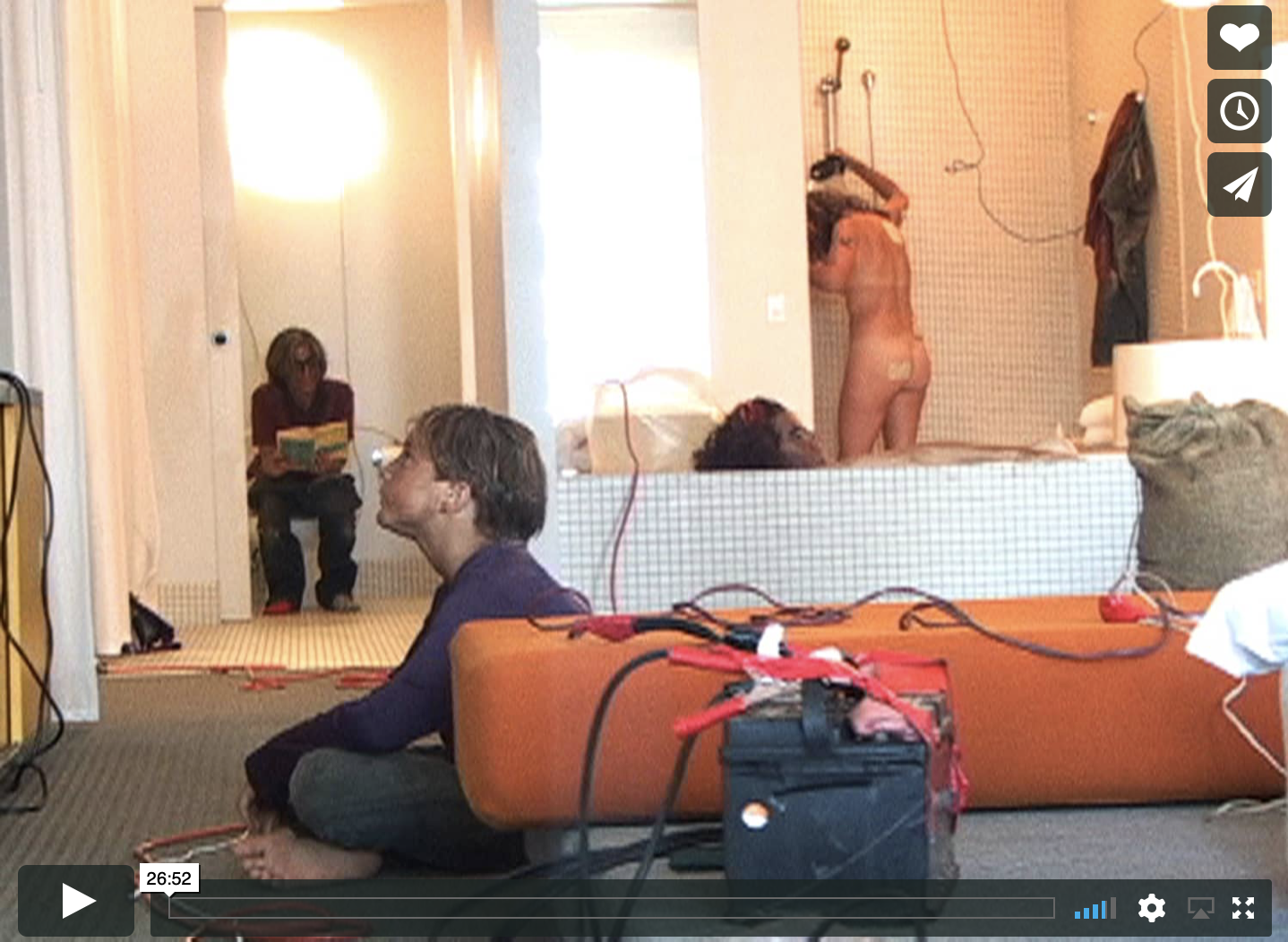
_____________
I See You Man (11:25 minutes, 2008)
‘Lois, in I See You Man, 2008, does nothing but talk. She reprises Kahn’s signature character, a circuits-fried free spirit who converses expansively, combatively, with an unseen cameraman (Dodge). She, too, is at the beach. “I think you’re really strong, man!” she yells at Dodge-slash-us, her interlocutors. “I’m voting for you, man!” Through the chilly fog, she urges that “it’s possible to actually purge yourself of crappy … electricity can pass through you … you gain psychic powers.” All this might be happening after apocalypse, certainly after empire. Maybe these neoferal foragers and metatribal urchins live so far off-grid that they populate a parallel reality. Dodge and Kahn explore what that family and culture might look like posthistory, postcommunication, postperformance, postgender, postself, postother. On the evidence of their characters, however, “post” in this sense doesn’t mean that gender, self, etc. have disappeared–rather that they’ve morphed beyond recognition. The antidote to general implosion is game-over innocence. Civilization reboots on different terms.’ — Artforum

_______________
Masters of None (11:55 minutes, 2006)
‘At first glance, Masters of None could be the home video of a family of neon-pink hooded figures, passing the time with charades, television, and Jiffy Pop on the stove. As in All Together Now, Masters has no dialogue or clear narrative arc, and while the domestic activities seem everyday, they are infused with suggestions of violence and danger. As the video progresses, it becomes more densely layered with disturbing television images: sporting accidents, snake fights and hard-core porn. The Jiffy Pop catches fire. The game of charades results in the death of one of the characters, who is buried in the backyard. The overarching soundtrack of distorted and unidentifiable sounds rises to a fever pitch as the figures devour snacks messily through their shrouds, captivated by whatever is on TV. Masters could also be a fable about the proximity of violence and absurdity under the Bush Administration.’ — Electronic Arts Intermix

_____________
Can’t Swallow It, Can’t Spit It Out (26:05 minutes, 2006)
‘Roberta Smith writes in The New York Times, “Ms. Kahn is seen with a bloodied nose, a viking helmet and a large wedge of rubber Swiss cheese, rambling around Los Angeles, talking to the camera, Ms. Dodge and us. The one-sided conversation turns variously competitive (‘You should have been there for that’), testy (‘This was mostly your idea’) and weird, as in a bit that begins, ‘When I was in hell…’. Jeffrey Kastener writes, “What at first might seem like random decisions in the works—unorthodox choices for location, wardrobe, and editing—are carefully poised to produce scenarios that flirt with slapstick without diluting their characters’ basic humanity. This balancing act is particularly vivid in the pair’s Can’t Swallow It, which charts the relationship that develops between that logorrheic Valkyrie and her voyeur-cum-documentarian as the two move from confrontation to empathy during the course of an off-kilter dérive through Los Angeles. Wandering a largely depopulated city, the woman regales her newfound companion with tales that run from personal reminiscences to insane ramblings.”‘ — Electronic Arts Intermix

_____________
The Ugly Truth (6:04 minutes, 2006)
‘Watching The Ugly Truth, a three-channel video installation that features Stanya Kahn in various green screen environments, snarling and glowering at the camera, head-banging maniacally and contorting her body with admirable endurance to the dulcet tones of the inimitable US rock band Journey, a series of incongruous descriptors springs to mind: hilarious, unguarded, performative, disarming, bracing, endearing, beautiful, analytical, intimate. In isolation none of these words does much to illuminate the video, and in combination one is left staring into the impassive face of interpretative failure. Kahn’s repetition of poses and gestures and the ubiquitous green screens suggest that we are witness to a rehearsal, perhaps for a music video, but the main event never materializes. Instead we are asked to accept Kahn’s process as her product. Fortunately, camera operator and director Harriet ‘Harry’ Dodge is there to provide some reassurance. While offering Kahn direction and deftly recording the action, Dodge comments, often with bemusement and awe, on her collaborator’s improvisational alacrity and on the strange magnetism that attends her sometimes quite feral performances; Kahn’s head-banging, for example, is worthy of vintage Metallica, while her studied snarl belongs to the theatrical Norwegian black metal tradition. Even Dodge, the co-producer of this video, finds herself at a loss for words, resorting instead – and quite understandably – to familiar colloquialisms such as ‘weird’ and ‘fuckin’ funny’.’ — Frieze

______________
Whacker (6:25 minutes, 2005)
‘Under a cloudless Los Angeles sky, Kahn—dressed in incongruous heels and a summery dress—runs an electric weed whacker through a hill of overgrown grass. During breaks, the whacker’s annoying buzz gives way to the trill of birds and distant sirens, with Elvis Presley’s In the Ghetto leaking from a passing car or a radio somewhere. Whacker conjures a tangible L.A. landscape, representing its distinctive mix of desultory glamour and urban hustle, cohabitating in the desert air. Kahn portrays a uniquely L.A. character: sporting Travis Bickle-style aviator sunglasses and chomping a wad of gum, she is disarmingly dedicated to her nonsensical task. According to Dodge, “It’s about the feral – the persistence of the weeds, the wild grass that insists on growing,” to which Kahn adds…”and a woman who is as tenacious as the weeds.” Writing in The New York Times, Jori Finkel observes, “Whacker falls somewhere between punk per
formance and theater of the absurd…”‘ — Electronic Arts Intermix
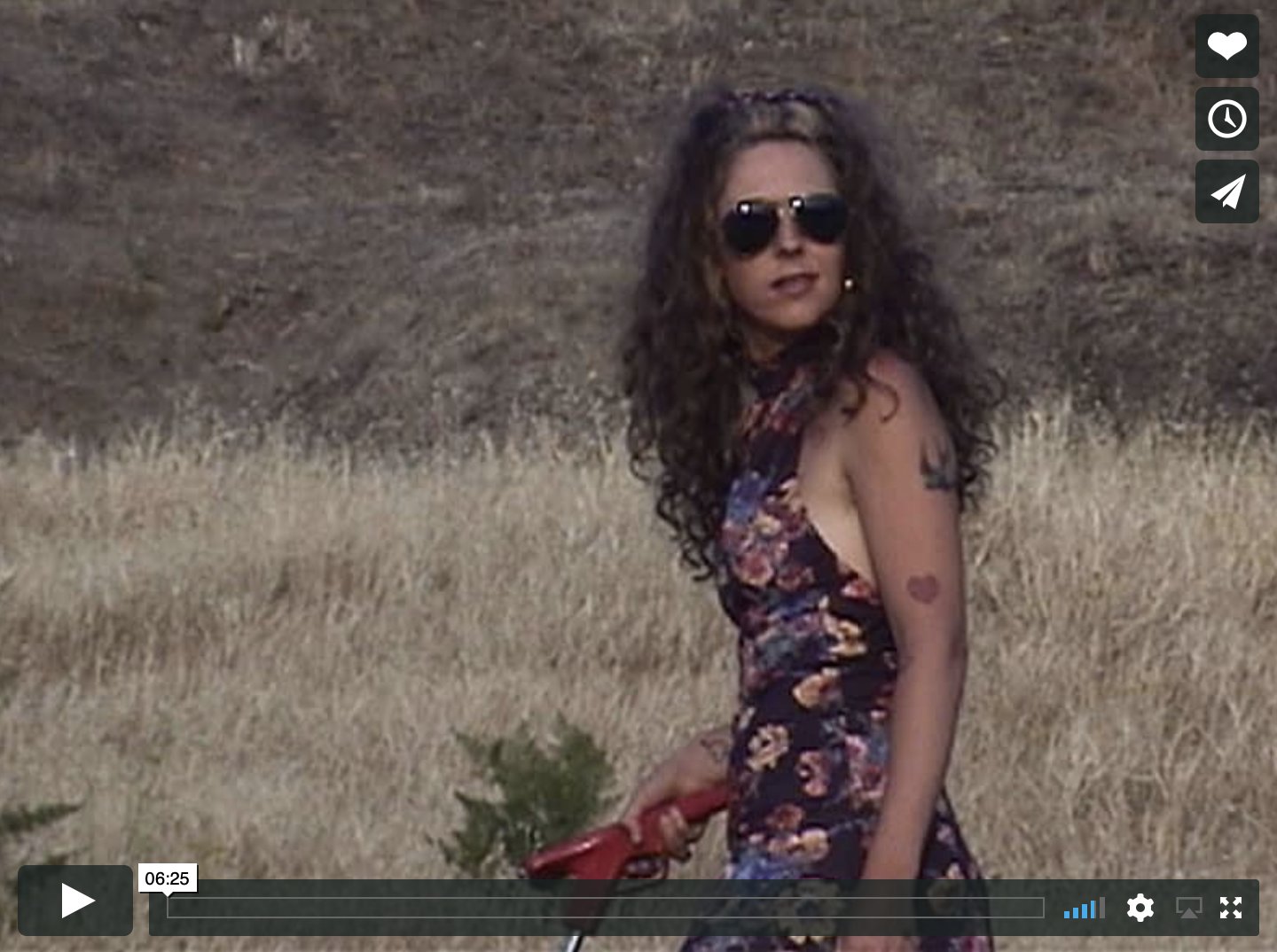
______________
Let The Good Times Roll (15:43 minutes, 2004)
‘Based on a live performance by Stanya Kahn, Let the Good Times Roll shuffles time and location as two loners meet in the desert on their way to a rock show. Stories of seasonal depression and finding unexpected exuberance emerge in suspended, Waiting for Godot-like circumstances. Writes Rachel Kushner in Artforum, “In Let The Good Times Roll, a depressive, effusive woman named Lois [Kahn] sits in a motel room telling an unseen cameraman about a party she once attended…If comedy in contemporary art seldom appears without qualifiers like deadpan, concrete or conceptual, Dodge and Kahn’s shared comic sensibility belongs to its own idiosyncratic genre, closer in tone and caliber to the artists’ cited influences (Richard Pryor, Lily Tomlin and Lenny Bruce) than to the art world’s site gag or idea-based sorts of humor.” On the other hand, writes Kushner, “art audiences uniquely and all too painfully relate to Lois’ various episodes of alienation, her hyperanalytic attempts to decipher cultural absurdities, and her brave, pathetic optimism in the face of failure.”‘ — Electronic Arts Intermix
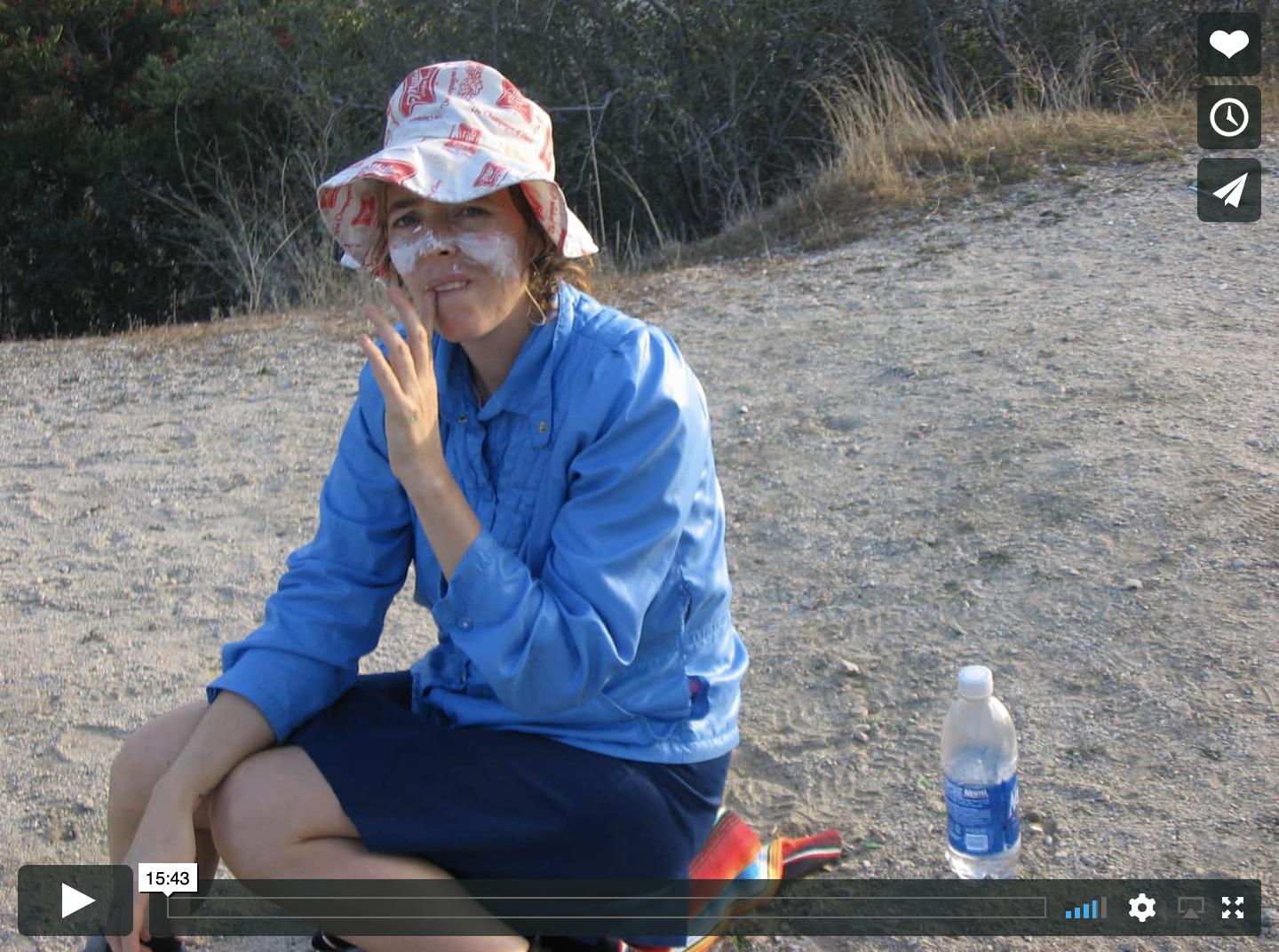
_____________
Winner (15:43 minutes, 2002)
‘Winner is a fictional interview gone awry, featuring a reticent sweepstakes winner who doggedly avoids receiving her prize and manages to morph an ad spot into a mini documentary about her art work. Shot in a day and largely improvised, Winner is the first collaborative video by Dodge and Kahn. Featuring Kahn as “Lois,” an attention-starved Angeleno, and Dodge as the cameraman who indulges her, Winner established a formative role-playing between them: a symbiotic relationship between camera and subject, indigenous to the world’s entertainment capital. In Winner, Lois gets her fifteen minutes in the spotlight when she wins a cruise through a radio call-in show. The sponsoring station deploys a cameraman, “Peter,” to record a clip of her thanking them for the prize, but Lois is more intent on showing him her sculptures, on display in the trunk of her car. They look like assemblages of flotsam, clumsily held together with duct tape. Peter initially tries to steer Lois back to the task at hand, but her desperation to have an audience—any audience—is so achingly palpable that he doesn’t have the heart to shut her out. He drifts with her into a nearby park, where Lois begins to talk of future film collaborations, and divulges a project in development, an adaptation of Michael Jackson’s Thriller music video, with wind and bird sounds layered over it. More than a parody of a L.A. wannabe, Lois is a complex character, as dangerously zealous and needy as Robert De Niro’s Rupert Pupkin in The King of Comedy.’ — Electronic Arts Intermix
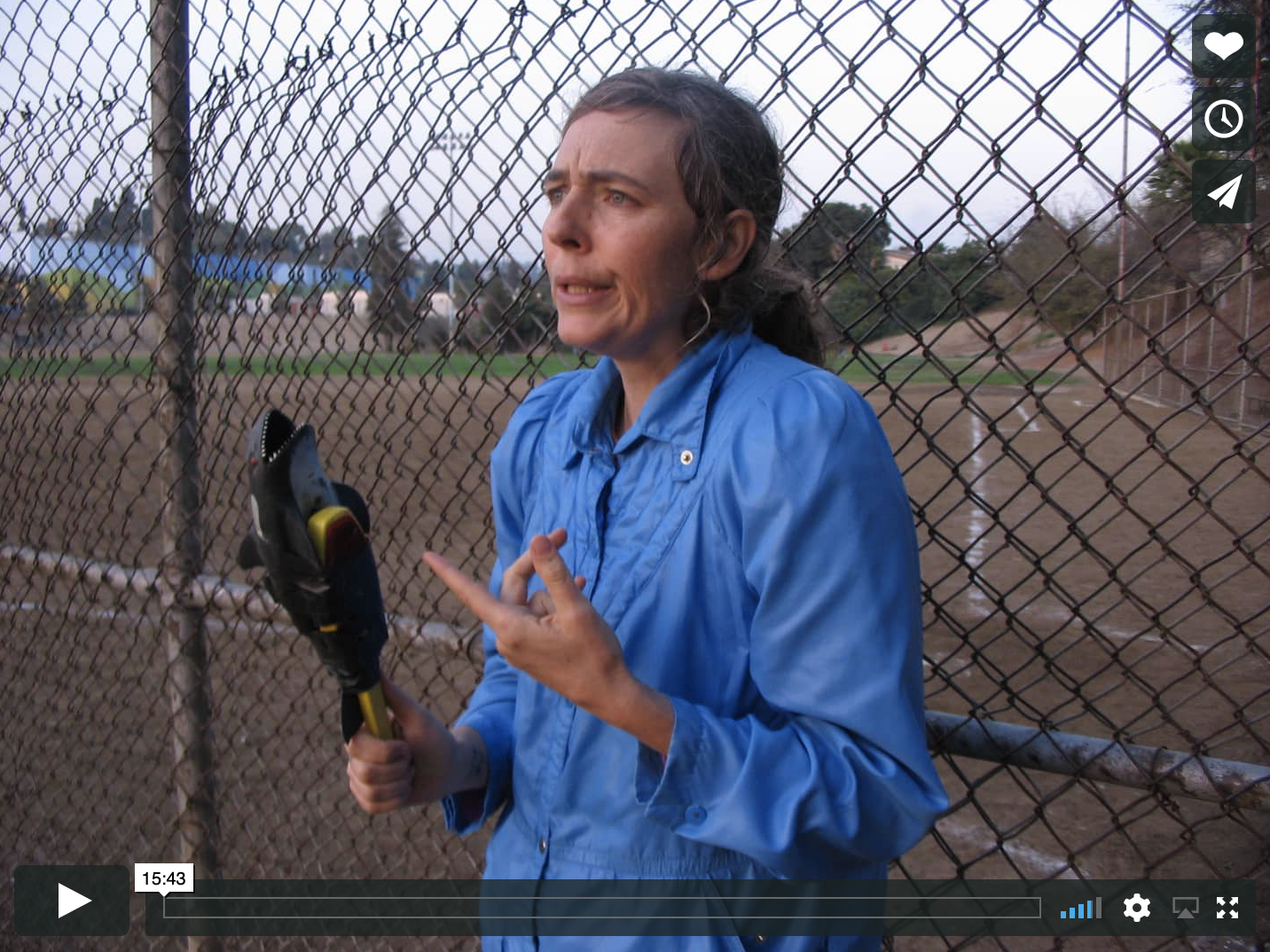
*
p.s. Hey. ** James, Hi. Yes, I’m a big fan of his ‘Paris’ novel too. I’m good, busy, good, busy. Like you, it sounds like. I got your email, and I’ll answer with my snail mail address ASAP. Thanks! The new film script is just finished, and now we’re locating a translator to turn it into French. Very happy and excited about it. Take care, and great luck with the last line edits! ** David Ehrenstein, He is, and my pleasure. It’s a stretch to call Camus an intellectual. More a writer turned careering loudmouth. So that must explain why some guy in my Facebook page who’s obsessed with Laura Nyro was posting photos of Sondheim and her hanging out in his pad all day yesterday. ** Tosh Berman, Hi, Tosh. I remembered you being a fellow fan of Vila-Matas. He collaborates a lot with my friend, the French Paris-based artist Dominique Gonzalez-Foerster, but I keep missing the opportunities to meet him. I hope and trust you’re doing great! ** Dominik, Hi, D! Yes, I’m almost finished with the new SCAB. It is so great, and, yes, think the best one yet too! Victoire! Publicising, yeah. I do think creating on online presence for SCAB is pretty crucial, as much of a hassle as that is. Like a page for it on FB, maybe on Instagram, Twitter too. Even if you don’t update it that often, people will ‘like’ or ‘follow’ it and will know when things are happening. And you can share things SCAB-like or that you’re into on the pages too if you want to keep it a little lively. I’m super happy with the film script and very excited about it. It’s different from ‘PGL’ in a lot of ways, but the core interest or thing that Zac and I want to do is still there. Yeah, now I’m just anxious to get it underway, meaning get the funding for it, which, unfortunately, will be a long, headache-y process, but that’s showbiz. I have to jump back into the TV script tomorrow after a big powwow about it today. The second ‘PGL’ poster: Well, it got delayed because Zac and Michael Salerno and I put together a poster that we thought met the distributor’s ‘friendlier’ requirement but was also exciting, but then they thought it was too dark as well, which seems very conservative to us. But we’re not experts on publicity, and there’s this kind of big, potential problem. The French film ratings board gave our a film a +16 rating, meaning no one under 16 can see it in a theater. They think the film encourages suicide, which is so completely ridiculous and just shows they didn’t pay any attention. Anyway, that rating would really hurt the film’s distribution because theaters are afraid of it, so now we’re challenging the rating in hopes of getting them to remove it. And I guess that’s partly why the distributors want a neutral poster. Ugh. So we had to end up making a poster that’s basically just a different but better version of the original poster we made for Rotterdam, and I’ll post it soon. Have huge fun with Anita, which I know you will! I’ll try to wring the fun out of my weekend, and let’s compare notes! ** _Black_Acrylic, That would be great, Ben! I’ll let you know the specifics as soon as there are specifics. Awesome! ** Steve Erickson, Hi. If you go back to ‘Tricks’ now, you can see the racial fetishisation under which his racism was semi-concealed. Is ‘High Life’ only coming out over there now? Well, it definitely made your brain hungrier for it than it did mine. But that’s cool, obvs. Shane Carruth can’t get a film made? That seems very strange. He must be asking for a lot of money or something? ** Corey Heiferman, It is worth reading, yep. I would say, yes, ‘Black Moon’ and ‘My Dinner … ‘ are his oeuvre’s outliers for pretty damned sure. Funny (cool) entrances. I hope your weekend has the energy of frantic-ness without the crazed aspect. Mine too. ** Right. I think that if you’re not someone who frequents galleries and museums, the videos of Dodge and Kahn might be new to you. I suppose that’s why, in addition to my really loving their work — they have subdivided and currently work in video as separate entities — I thought I would put their stuff here where you can watch it without having to walk or subway or train or fly to a gallery district. They’re great, and I hope you like the show. See you on Monday.




 Now available in North America
Now available in North America 
The French Film Board — and the Catholic Church — said that “Le Diable Probablement” “encourages suicide” too. So you’re in excellent company.
There’s been a lot of press interest stateside in teenage suicide of late so “PGL” may well figure into that narrative.
Dodge and Kahn are new to me. Quite interesting.
It’s Party Time!
Hi Dennis, you good? haha I think the blog swallowed my post yesterday or I missed the cutoff so am reposting. I want to go see PGL in Glasgow… Bartleby & Co! There was a bit of that novel woven into Solvent Form, so it is nice to see that here and how have I never heard of Dodge and Kahn? It makes me excited to see all of the good things you have in the works. I’m feeling a bit disappointed and stressed cuz a couple of things fell through with stuff for my book and its legs, but other than that things are good and I’m trying to put together the beginnings of what will be the next thing. How are you?
Dodge and Kahn look fascinating. Will spend some time with the clips soon.
Weekend greetings from not so mysterious Hong Kong, Dennis. Just came across this pretty nice work:
https://www.chandick.hk/the-trek#1
The international film fest is on, with a sprawling uneven program. I guess this makes up for the boring offerings the rest of the year, haha. They’re screening the new Peter Strickland, which sounds a bit of a departure for him, but I’m super-excited nevertheless.
Bill
Hey Dennis!
Been thinking of you lately. I reread that passage from TRY I’m obsessed with for the zillionth time, and got caught up in the Ziggy/Calhoun vibes. I know the characters are just tools/devices to you and not people, but damn do they affect me.
Then I was reading some interview with you where you mentioned The Heart is a Lonely Hunter, so I downloaded that and read a few chapters. I’ve gotta be honest, I like your books a LOT more than it so far, haha, but I’m going to try to finish it.
I hate to always be dropping links when I’m here, but I wrote a flash piece I’m really happy with — it’s my favorite thing I’ve written since the story you picked for Userlands, tbh. The link is at https://maudlinhouse.net/my-favorite-persons-least-favorite-show/ if you have a chance, it’s <1000 words, all dialogue.
Anyway, I saw you on Blake Butler’s twitter, so cool. I really hope I can meet you someday, in Paris or elsewhere. I’d say that I wish you’d come to Dallas, but I don’t think I could wish coming to Dallas on anyone, haha.
I hope you’re doing well, I miss you and the blog and old times, even though that’s kind of a nonsensical emotion. But I think about you often, and I hope you’re really happy. xo
i love stanya and harry!!
Dennis, What? PGL DOESN’T encourage suicide? I’m kidding. Fucking ridiculous.
You know what’s weird for me? I get called/referred to as “conservative” a lot, but fuck, I see some “liberal” people’s reaction to Art and am like, “And I’M the ‘conservative’?” I don’t know, I guess it’s because I’m a registered Libertarian that makes me “conservative,” but it ain’t nothing else. Jesus, when did people unlearn how to approach and appreciate Art?
So our contract is up for renewal in September/October (and it will be renewed). However, it has to be adjusted for using the laptops and working from home. That language has to be added/included. So definitely not before then. And then it’s a matter of getting the “refresh” to laptops for those of us with desktops, which, knowing the federal government, could take much longer. However, there is a ticket in already for me to get one because of some problems I had with my desktop a while back that knocked me offline for a day or two. I might get mine earlier than the others, and then I think my immediate supervisor would be okay with me working from home a bit in the meantime. He and I have a very good relationship, and he knows I won’t take advantage.
Here’s the real catch and why the language needs to be in place: they’ve had cases before where people have said, “Okay, I can work from home…the federal government then needs to pay for my internet connection!” Complete bullshit, of course, but people have tried that. Me, I’m gonna have internet/wifi no matter what and I ain’t care that I’m paying for it. But better safe than sorry.
Long story short, it could be next week or next year. Fingers crossed that it’s sooner rather than later.
Hey, Dennis! Per your request, I’m sharing with you the link to that new online poetry journal I spoke of the other day. It’s called Bad Dog and the editor/founder is the Canadian poet Joshua Chris Bouchard. I haven’t fully dove into it yet but I love the look of it. Anyway, issue one is here: https://bad-dog-review.com/issue-one
I’m excited to be part of something new, and I’m pleased with the two poems of mine he chose to publish.
I remember Stanya. Her story was one of my favorites in Userlands. It’s about time I view her art.
Hope you’re having an excellent weekend. Best to you always.
Robert
Hey Coop! Sup!
Just catching up a bit but I bet I missed tons – what’s new? I see that you’ve been given the +16 card. DUDE. That fucking sucks. Not completely surprising but that sucks. I kinda wonder how those censor bodies have evolved (or not) in the last 10 or so years; do they take into account that kids even do see on a daily basis, in ads, on youtube etc? I mean PGL is heavy psychologically but that’s not usually something they grab onto. Damn.
I’ve just come back from the West Coast, where my little bunny rabbit self hopped maniacally north from San Diego to LA to San Francisco/Oakland to Seattle in 4 days and somehow in between flights and meetings still managed to cram in sunny seaside lunch at La Jolla, the Riverside Mission Inn, a drive by the orange poppy superbloom, some lavish SanFran views and in the end a few days in Seattle. Man, what a great city Seattle is. I could see myself moving there, seriously. Loved it. Sea, lakes, mountains, trees, in all directions, sea otters at the aquarium busy being the cutest critters of all creation, and bookstores and great coffee everywhere; I mean what else does one need in life?
Larry Cohen R.I.P. On minuscule budgets he managed to make some of the most original horror and sci-fi flicks of all time. My favorite is “Q”
I’m a fan of Dodge and Kahn, I think Winner is my fave but all that they do is a constant joy.
Over the weekend I added a couple more names to The Call zine’s lineup – another artist and another writer to make it a comprehensive art and speculative fiction rock festival of sorts. My plan with this is just to get the first issue printed via Risograph and to have the website designed at around the same time… and then maybe set up an Etsy page for it or a PayPal button on the website in case anyone wants to purchase a paper copy of their own. From there we’ll see how it goes but I want to keep it off the cuff in the beginnings.
From what I’ve read, Carruth had 2 scripts that were ready to go and he’d been actively looking for production funds, but he’s abandoned that search as fruitless. Alas, THE DEAD CENTER was lame VOD bait that lifted too many ideas from other horror films, although his performance is pretty good.
However, it gave me some ideas for a new script I’ve been thinking about. Maybe an atheist take on the idea of demonic possession, centered around a psychiatrist’s encounter with a patient who claims his soul is being consumed by an evil force? I’d like to use that mythology, which so many horror films claim to take seriously, as a metaphor for the kind of flexing and performance so many people do on Instagram and YouTube, although I’m not sure how to write this in a way that makes sense at all.
Maybe the 16+ rating will serve as a come-on French teens and they will download PGL on VOD once it becomes available to them? That misinterpretation is really dumb, though.
MASTERS OF NONE made me think of Harmony Korine’s TRASH HUMPERS, except with the aggression expressed in a more diffuse manner .
Nicely observed re Masters of None and Trash Humpers.
hey dennis !!
I was so excited to see the Stanya Kahn & Harry Dodge day here, i’ve been such a big fan of “I’m Cool, It’s Good” ever since u featured it in a blog post on here years ago.
i watched “it’s cool” again this morning (https://vimeo.com/106456772) & i’m so totally & deeply inspired again by it. i wish i could fully articulate why her work hits me so hard, but it makes me feel very anarchic and free and full of possibility. i like how there are all these little stitches of scenes smeared together in a way that suggests this bigger world-building project around the characters, but that world still stays very oblique and mysterious. this morning i was thinking that seems (to me at least) how most of burroughs works too, these accumulations of weird bits that suggest a complete world that you only get glimpses of. is there something about Kahn & Dodge’s work that u feel attracted to in particular?
I’m so excited to watch the films i haven’t seen yet !! & check out the other interview videos and other things. this is such a goldmine and thank u for putting it together.
hope u have a good morning !!
This blog is like a warm caress, Ora cold slap in the face with little inbetween – in a good way – this week is both
Wow thanks for the treasure trove here. I’ll probably have more to say about it over the coming days.
Small venues becoming more specialized from the 70’s to the 80’s, hmmm. Still trying to figure out the art world works here, starting with my use-it-or-lose-it government film school scholarship. Visiting the university today to start sorting that out.
Your blessing for the weekend turned out well. After many lazy Saturdays I finally did the Hebrew reading and camera experimenting I’d been thinking about for a while.
How’s busyness?